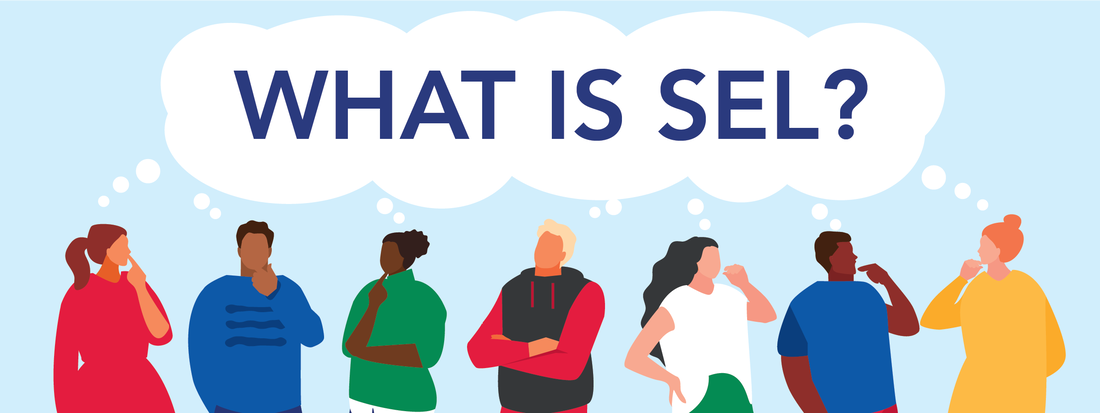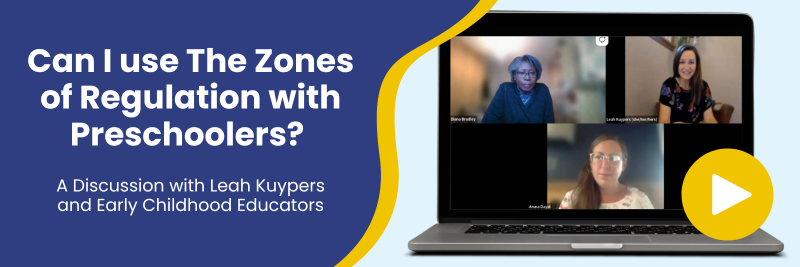Social emotional learning, commonly referred to as SEL, is one of those educational phrases that can be interpreted – or misinterpreted – to mean almost anything. In the field of education, SEL is defined as “the process through which all young people and adults acquire and apply the knowledge, skills, and attitudes to develop healthy identities, manage emotions and achieve personal and collective goals, feel and show empathy for others, establish and maintain supportive relationships, and make responsible and caring decisions” (CASEL, 2022). That’s a mouthful. At The Zones of Regulation, we specialize in feelings. The Zones curriculum builds foundational awareness and regulation skills by teaching learners easy ways to think about, talk about, and regulate their feelings.

Research into the impact of SEL instruction clearly shows that investing time and resources into SEL pays off both in short-term wellness, behavioral, and academic outcomes as well as long-term benefits into adulthood. Despite this, investing in SEL can sometimes be a tough sell among various stakeholders. Recent national surveys show that while most parents and caregivers support teaching SEL concepts in school, they find the term “social emotional learning” itself to be objectionable (the term polling best among parents is “life skills”). On top of this, state and local education entities differ in their interest and willingness to fund SEL, and our teachers are overloaded. So in the face of all of this, how can school leaders talk to staff members, families, and even community members about the value of quality social emotional learning in a way that bridges these divides?
In spring 2022, Zones Trainer and Consultant Emily Walz joined Branching Minds for a free webinar panel discussion on “Communicating SEL Initiatives and Programs with Communities.” The panel of SEL experts shared advice and recommendations for establishing buy-in among school staff, sharing insights with families and community members, and clearing up misconceptions around what SEL really looks and sounds like at school. Check out this great conversation!
HERE ARE A FEW TIPS TO GET THE CONVERSATION STARTED IN YOUR LEARNING COMMUNITY:
School Staff:
Start with the WHY – have an open conversation with staff about both their hopes and dreams for their students and the social, emotional, and behavioral challenges they are seeing in their classrooms. Start with questions like, “What big picture goals do you have for our students? What skills do we want to foster to help them reach those goals?”
- Ground your conversation in data by looking at schoolwide data points including academic outcomes, behavioral data, and SEL data (screeners, surveys, etc). Use a critical equity lens to think about why and how to move forward with teaching SEL.
- Address the most common barrier: time. Set aside dedicated time for SEL instruction and climate-building for all teachers. Revisit what the research tells us: Time spent on proactive SEL instruction is time saved on addressing behavioral challenges during academics.
Families and Caregivers:
Ask and listen to how families are building social and emotional skills with their kids at home. Draw parallels to how these skills transfer to the school setting. Start with questions like, “How does your family talk about big feelings like being mad, sad, frustrated at home?”
- Be specific as to what you’re teaching, share learning targets and show examples of the concepts you’ll cover in your SEL instruction to develop trust, comfort, and address misconceptions.
- Find common ground on your hopes and goals for student learning and discuss how teaching SEL skills can help kids thrive at school. Ask questions like, “What dreams do you have for your child? How can we work together to support your child?”
Community Members:
Lean in with curiosity about community members’ hopes and dreams for the young people in your area. You can ask questions like, “What would it look like for kids to be thriving in our community?”
- Provide details as to what your instructional goals are within SEL, and what your materials look like to address questions and misconceptions.
- Connect the dots between SEL instruction and job readiness and citizenship in your community. You can set the stage by asking questions like, “What skills do our kids need to be good employees in our local businesses?”
REFERENCES:
Fordham Institute: How to Sell SEL: Parents and the Politics of Social-Emotional Learning (2021) https://sel.fordhaminstitute.org/
Child Development Journal: Promoting Positive Youth Development Through School-Based Social and Emotional Learning Interventions: A Meta-Analysis of Follow-Up Effects (2017) https://srcd.onlinelibrary.wiley.com/doi/full/10.1111/cdev.12864
CASEL: The Collaborative for Social and Emotional Learning casel.org





